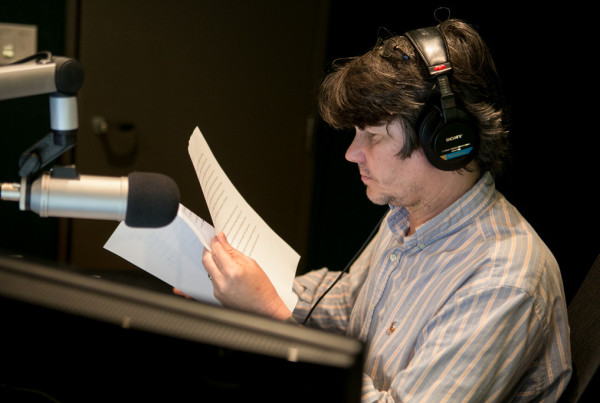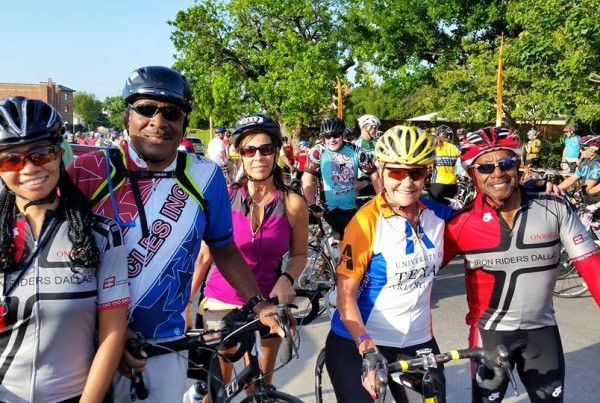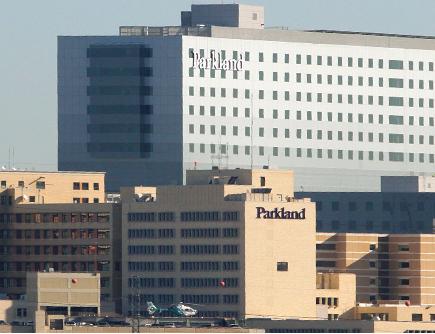This story originally appeared on Houston Public Media.
It sometimes seems like there’s an app for everything, but until now there wasn’t one for victims of natural disasters. But attorneys and software developers are putting the final tweaks on an app to help people recovering from floods, hurricanes, tornadoes and other natural and man-made disasters.
The app will be released in October, under the name “DART,” for Disaster Assistance and Recovery Tool. It will be free and usable from any desktop or mobile device, said Saundra Brown, an attorney at Lone Star Legal Aid in Houston.
“It gives them quick answers and it’s at their fingertips,” she said. “This will be a great boon to everybody that gets in contact with it.”
The app will guide disaster victims through a questionnaire about their damage, their housing situation, and then advise them on next steps.
Brown is a national legal expert on disaster recovery. She provided the content for the application, and it was put together by tech-oriented law students at Georgetown Law in Washington, DC.
Brown says far too many flood victims miss out on grants and loans that could help them rebuild their lives.
“A lot of people don’t realize that even if you have flood insurance you should also apply to FEMA, it gives you extra flexibility. And also the Small Business Association,” she said. “People don’t realize that even though it’s called the Small Business Association it gives more disaster funding than any other agency.”
The SBA provides low-interest loans, FEMA provides grants, and there are other programs that can kick in later to assist people in rebuilding or elevating their damaged homes.
After completing the app, users will get a personalized report telling them what programs to apply for.
“People could look at that app in the privacy of their own home. They don’t have to contact a governmental agency, which some people seem to be hesitant to do,” Brown said.
The app includes tips and advice gleaned from previous disasters.
“The big lesson out of Katrina was keep all your receipts, you’re required to keep them for three years,” Brown said. “The big lesson after Ike was only use your money for what it’s designated for by FEMA. We had a lot of problems with people living off the money FEMA had given them for housing repairs.”
Those residents who misused the money were later unable to access another federal aid program, known as Community Development Block Grants.
In Harris County alone, about 2,500 homes were affected by the recent floods, and 3,700 apartments.
Francisco Sanchez, a spokesman for the county’s office of emergency management, says the app will be a big help after future floods and hurricanes, or even tornadoes and ice storms.
“People are expecting information in a digital format,” Sanchez said. “If people have evacuated or moved out of their community based on a disaster, that information is now with them in that app.”
Brown and the developers are still tweaking the web-based application. It should be ready in October and will be housed on the website disasterlegalaid.org.
The app would have helped people like Rebecca Sillitoe, a Meyerland mother of two. The Sillitoe family had almost two feet of water inundate their ranch home, which faces Brays Bayou. (See also NPR story, May 28, 2015).
On May 27, she and her husband spent the day ripping out carpet and salvaging damp clothes. Sillitoe trudged through the soggy house in rubber boots, logging her losses on a laptop.
She said at the time it was difficult to figure out what agencies could help her, how long it would all take, and how different programs would intersect.
“There’s so many questions and I don’t know who to ask some of these questions,” Sillitoe said. “I just there was a – I’m just a logical flow person, like, [tell me] who’s the person and who can give me a direct yes or no.”
Brown says the DART application will be helpful for someone like Sillitoe, though it’s not a substitute for hiring an attorney if claims and denials get complicated. For low- and moderate-income residents, Legal Aid can also provide disaster assistance.
Brown also emphasized that the application does not submit applications to FEMA or other programs.
“It doesn’t apply for you,” Brown said. “It tells you where to go, what to do, what you’re likely to be eligible for, and then you get an understanding of what these other programs are and how they can be helpful to you. That’s what it does, you have to take the next step.”















